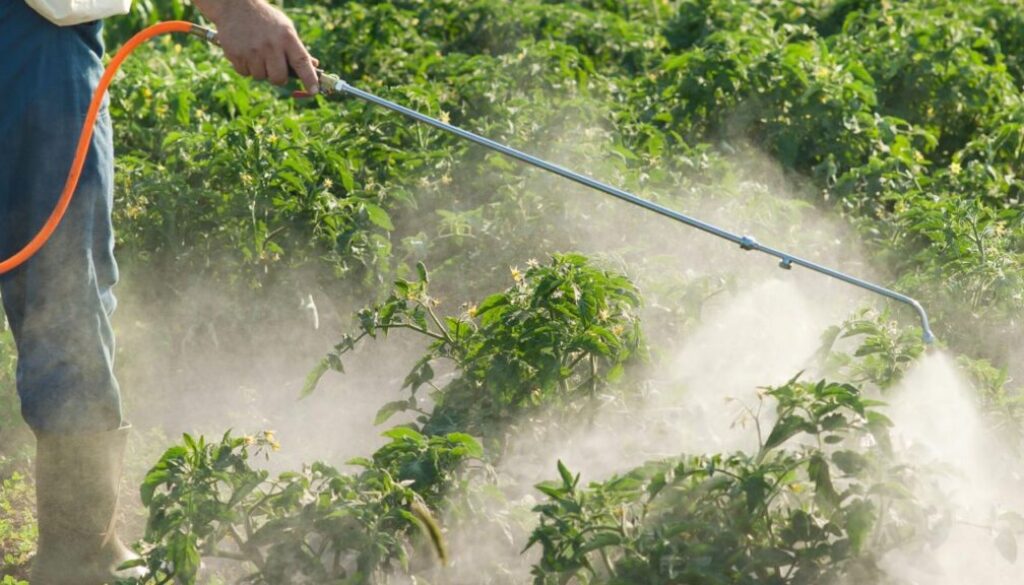California pushes ahead with its new pesticide-reduction plan
By Pam Strayer and Carey Gillam
Amid mounting evidence of the risks some synthetic pesticides pose to human and environmental health, California regulators this week were pushing ahead with a recently announced “roadmap” aimed at transitioning the state to more sustainable options for managing weeds and insects,
The California Department of Pesticide Regulation (DPR), in partnership with the California Department of Food and Agriculture (CDFA), held two public webinars on Thursday seeking to explain the details of the plan – and bolster support for it – as the state nears the March 13 close of the public comment period on the proposal.
State officials announced the plan in January, saying the goal is to eliminate the use of “high-risk pesticides” by 2050 to “better protect the health of our communities and environment, while supporting agriculture, food systems and community well-being.”
That message was underscored in Thursday’s event: “The evolving science about risks and impacts from certain pesticide uses on our health and our environment, which too commonly impacts communities already overburdened by other environmental hazards, point to the importance of accelerating this system-wide shift,” Clare Mendelsohn deputy secretary for public policy at California Environmental Protection Agency, said in the evening webinar.
State officials say the Sustainable Pest Management (SPM) plan is visionary and will significantly overhaul harmful agricultural practices in the state, helping protect farmworkers and others put at risk through exposure to pesticides known to be harmful to human health.
CDFA Secretary Karen Ross has said that once implemented, the recommendations would “ensure an abundant and healthful food supply, protect our natural resources, and create healthy, resilient communities.”
But some say the plan falls short in many respects, and that faster and more aggressive actions are needed to protect and enhance soil health, adapt to climate change, and protect human health.
A “false start”
A chief concern is that the state plan is designed as an “evolution” of the state’s Integrated Pest Management program, which focuses on strategies such as habitat manipulation, biological controls, resistant plant varieties, and modified horticultural practices, while still allowing for the use of pesticides in certain circumstances.
“I would have to call this a false start that does not embrace the true changes that are required for our times and the crises we face,” Beyond Pesticides Executive Director Jay Feldman said in a statement. “We can stop using synthetic pesticides and fertilizers; we need a plan — based on precautionary, organic, and regenerative principles — to move us forward to that goal, and we need it ASAP.”
Farm advocates say pesticides that kill weeds and insects and diseases are much too important to food production to restrict without effective alternatives. Pesticides are particularly popular with California’s strawberry industry, which accounted for roughly $2 billion in revenue in 2020 and supplies 90% of US strawberries. Strawberry producers use large quantities of fumigants, which are gaseous pesticides injected into the soil of agricultural fields prior to planting. Pesticides are also used in large quantities by the state’s $3.6 billion citrus industry, among others.
Even pesticides with a known track record of risk are popular in California. In 2020, the $5.6 billion almond industry sprayed more than 357,000 pounds of paraquat weed killer on 286,697 acres of orchards. Paraquat is known to be acutely toxic if a small amount is accidentally ingested, and long-term exposure has been linked to Parkinson’s disease. It has been banned throughout Europe and other countries but US farmers still find the product’s effectiveness beneficial and US regulators have allowed its continued use.
Before imposing new restrictions on pesticides, the state should register “effective and efficient alternatives,” Matthew Allen, Western Growers vice president of state government affairs, said in a statement. “The department must continue to use the best available scientific data and methods in evaluating pesticides and they, frankly, have a duty to remind the public that California already has the most comprehensive regulatory system in place that protects the health and safety of applicators, bystanders and surrounding communities.”
The state plan includes funding for growers as they transition away from the high-risk pesticides, along with research funding for pesticide alternatives, and requirements for state procurement that favors crops and products grown under SPM guidelines.
“If the state does that, that’s one of the biggest drivers of all,” said Margaret Reeves, senior scientist at Pesticide Action Network North America and a participant in the SPM work group. “Who wouldn’t rather spend less money on pesticides and fertilizers and lower the health risks of your family and contamination of water and demise of the pollinators? Who wouldn’t want that? But it’s hard. So there needs to be a lot of hand holding and financial health and education to make that happen.”
In the webinar on Thursday, Reeves said the group “kicked the can down the road” in terms of identifying the specific pesticides that will be targeted as priorities by the new program, and she said those determinations will be “critically important.”
“Politically defensible”
California formed the SPM work group after fallout from the state ban on an insecticide called chlorpyrifos in 2019. A bitter battle ensued between citrus growers and the state, with farmers saying there were no adequate alternatives and that they were caught off guard losing a relied-on chemical without much notice.
“A lot of people in the grower community felt like they were really blindsided by that process–and that all of a sudden, it was announced that it was no longer going to be used at the end of 2020. They felt not included or not warned, and there weren’t adequate replacements,” said Kim Harley, a reproductive epidemiologist and associate professor at UC Berkeley, School of Public Health who served on a chlorpyrifos committee for the state.
To create the new roadmap, the state assembled 25 members representing diverse interests to address sustainable pest management in agricultural settings, and an additional eight members for an urban subgroup to specifically address pest pressures in non-farm, urban areas.
State officials say their plan will still allow interventions for managing threats to crop production, but the new strategy depends on building knowledge about alternative tools, practices, systems, technologies, biological controls, biopesticides, chemistries, and preventive measures to effectively manage pest problems and reduce pesticide-related risk. For example, one alternative is for farmers, urban landscapers and others using synthetic pesticides to shift to what are commonly called “biopesticides”, or biologicals, which are derived from natural materials, including bacteria and certain minerals.
The plan achieved a “middle ground” between parties with varied, competing interests, said Houston Wilson, director of the University of California Organic Agriculture Institute, who sat on the working group that came up with the SPM plan.
Among the other members of the working group were farmers, academics, representatives from environmental health and justice groups, and an official from Bayer Crop Science.
Wilson described the two-year process as “very painful… some groups have fundamentally different worldviews.” But, he added: “I think given the diversity of stakeholders that were involved, it’s very politically defensible.”
 EWG
EWG


